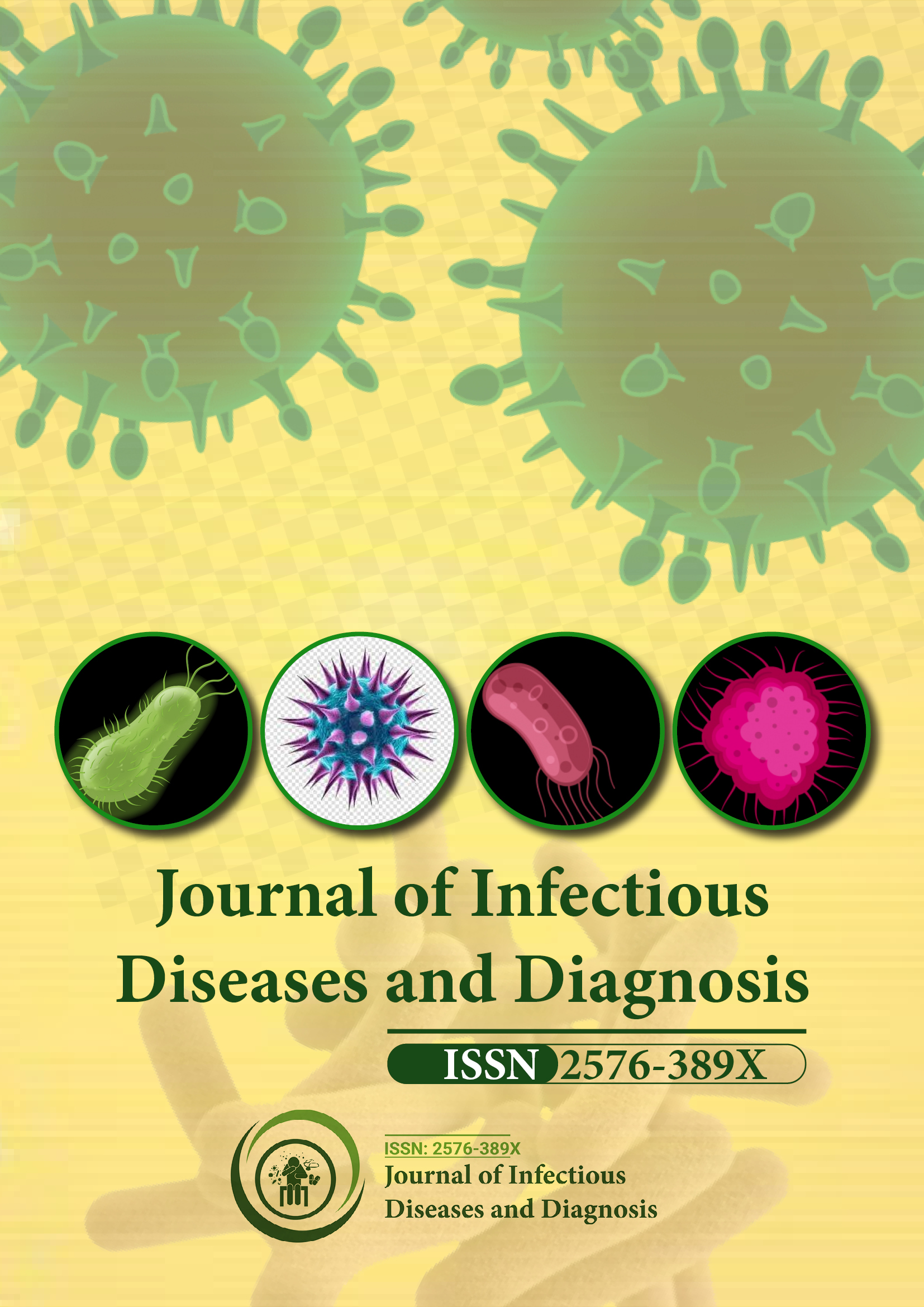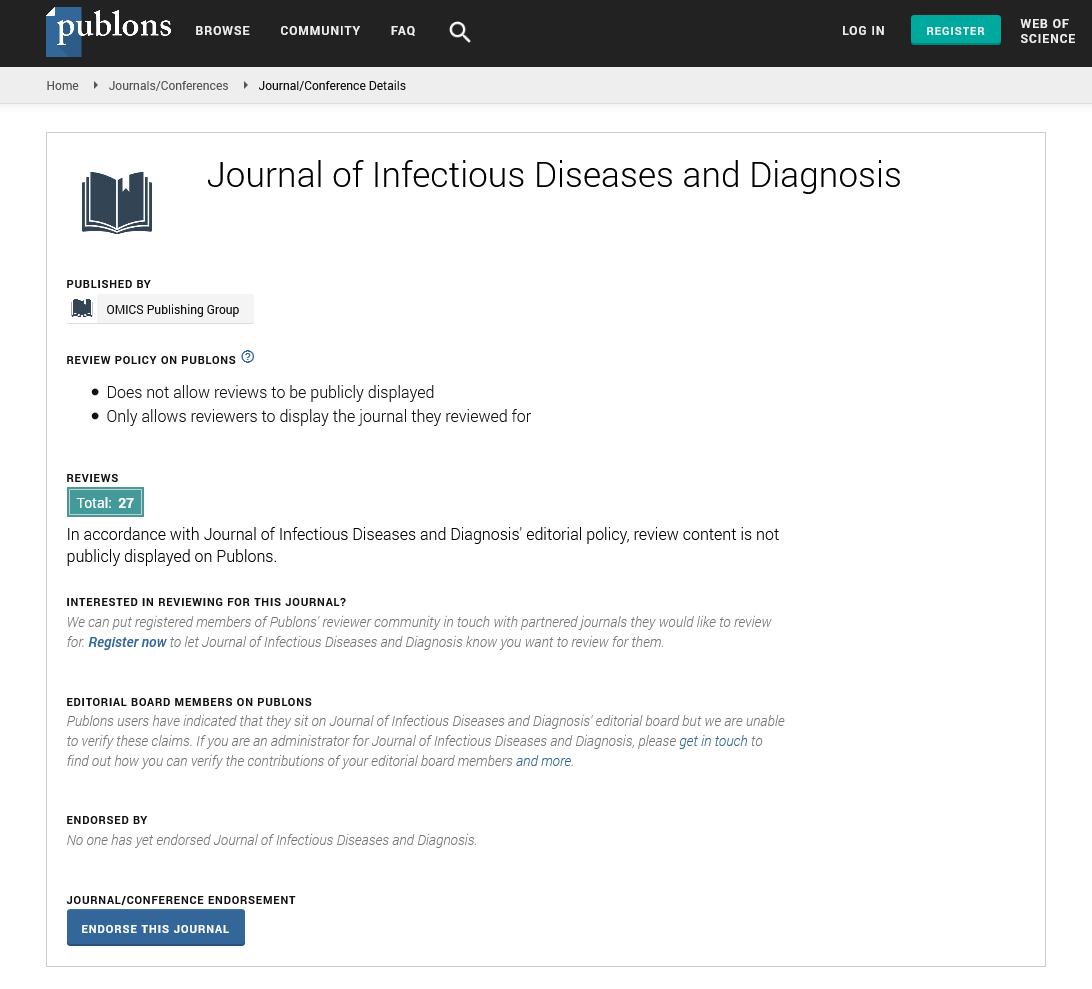Indexed In
- RefSeek
- Hamdard University
- EBSCO A-Z
- Publons
- Euro Pub
- Google Scholar
Useful Links
Share This Page
Journal Flyer

Open Access Journals
- Agri and Aquaculture
- Biochemistry
- Bioinformatics & Systems Biology
- Business & Management
- Chemistry
- Clinical Sciences
- Engineering
- Food & Nutrition
- General Science
- Genetics & Molecular Biology
- Immunology & Microbiology
- Medical Sciences
- Neuroscience & Psychology
- Nursing & Health Care
- Pharmaceutical Sciences
Perspective - (2024) Volume 9, Issue 3
Essential Parasite Proteins in Malaria: Mechanisms and Therapeutic Target
Roberto Williams*Received: 01-May-2024, Manuscript No. JIDD-24-26006; Editor assigned: 03-May-2024, Pre QC No. JIDD-24-26006 (PQ); Reviewed: 20-May-2024, QC No. JIDD-24-26006; Revised: 27-May-2024, Manuscript No. JIDD-24-26006 (R); Published: 03-Jun-2024, DOI: 10.35248/2576-389X.24.09.268
About the Study
Malaria remains a significant global health challenge, particularly in tropical and subtropical regions where the disease is endemic. The lifecycle of Plasmodium, the malarial parasite, involves complex interactions with both mosquito and human hosts. A critical phase in the human host is the parasite's migration to and infection of liver cells, which sets the stage for the subsequent blood stage of the infection. Understanding the proteins essential for the parasite to reach and infect liver cells is crucial for developing targeted interventions that could potentially halt the disease early in its course.
Recent research has highlighted the importance of specific proteins that facilitate the parasite’s journey from the bloodstream to the liver. One such protein, known as Circumsporozoite Protein (CSP), plays a pivotal role in the initial stages of infection. CSP is found on the surface of the sporozoites, the form of the parasite injected by mosquitoes into the bloodstream. CSP mediates the parasite’s adhesion to and traversal through the endothelial cells lining blood vessels and is essential for its eventual invasion of hepatocytes, or liver cells.
CSP has a dual function. Firstly, it facilitates the sporozoite’s exit from the mosquito's salivary glands and entry into the human bloodstream. Secondly, once inside the human host, CSP interacts with hepatocyte receptors, promoting the parasite’s migration across the endothelial barrier and into liver tissue. This protein's ability to bind to heparan sulfate proteoglycans on the surface of hepatocytes is a key mechanism that enables the parasite to localize to the liver.
In addition to CSP, another protein known as Thrombospondin- Related Anonymous Protein is critical (TRAP) for the motility of sporozoites. TRAP enables the parasite to glide through the extracellular matrix and cellular barriers, a process essential for reaching the liver. The interaction between CSP, TRAP, and host cell receptors underscores a finely tuned mechanism that ensures the parasite’s successful transition from the bloodstream to the liver.
Blocking the functions of these proteins could provide a viable strategy for preventing malaria. Vaccines targeting CSP, such as the RTS,S/AS01 vaccine, have shown potential in clinical trials. This vaccine induces an immune response against CSP, thereby reducing the parasite's ability to infect liver cells. Although the vaccine does not offer complete protection, it significantly reduces the incidence of clinical malaria, highlighting the potential of targeting essential proteins in the parasite’s lifecycle.
Furthermore, research into small molecule inhibitors that disrupt the function of CSP and TRAP is ongoing. These inhibitors aim to block the interaction between the parasite and hepatocyte receptors, preventing the sporozoites from establishing infection in the liver. Such therapeutic approaches could complement existing antimalarial drugs, offering a multi-faceted strategy to combat the disease.
The study of these proteins also provides insights into the evolutionary adaptations of Plasmodium. The precise mechanisms by which CSP and TRAP facilitate liver infection suggest a highly specialized evolutionary path customized to optimize the parasite’s chances of survival and replication. By understanding these adaptations, researchers can better anticipate potential challenges in developing effective interventions and may identify additional targets for therapeutic development.
Moreover, the broader implications of this research extend to understanding host-pathogen interactions. The mechanisms employed by Plasmodium to invade liver cells share similarities with other pathogens that exploit cellular receptors for entry. Therefore, the insights gained from malaria research could inform the development of strategies against a range of infectious diseases.
Conclusion
In conclusion, proteins such as CSP and TRAP are essential for the malarial parasite's ability to reach and infect liver cells. Their roles in mediating sporozoite migration and invasion highlight critical points in the parasite's lifecycle that can be targeted for intervention. Efforts to develop vaccines and therapeutics that inhibit these proteins are showing and representing a strategic approach to reducing the burden of malaria. Continued research into these and other essential proteins will be vital for advancing our understanding of malaria pathogenesis and for the development of innovative strategies to prevent and treat this pervasive disease.
Citation: Williams R (2024) Essential Parasite Proteins in Malaria: Mechanisms and Therapeutic Target. J Infect Dis Diagn. 9:268.
Copyright: © 2024 Williams R. This is an open-access article distributed under the terms of the Creative Commons Attribution License, which permits unrestricted use, distribution, and reproduction in any medium, provided the original author and source are credited.

